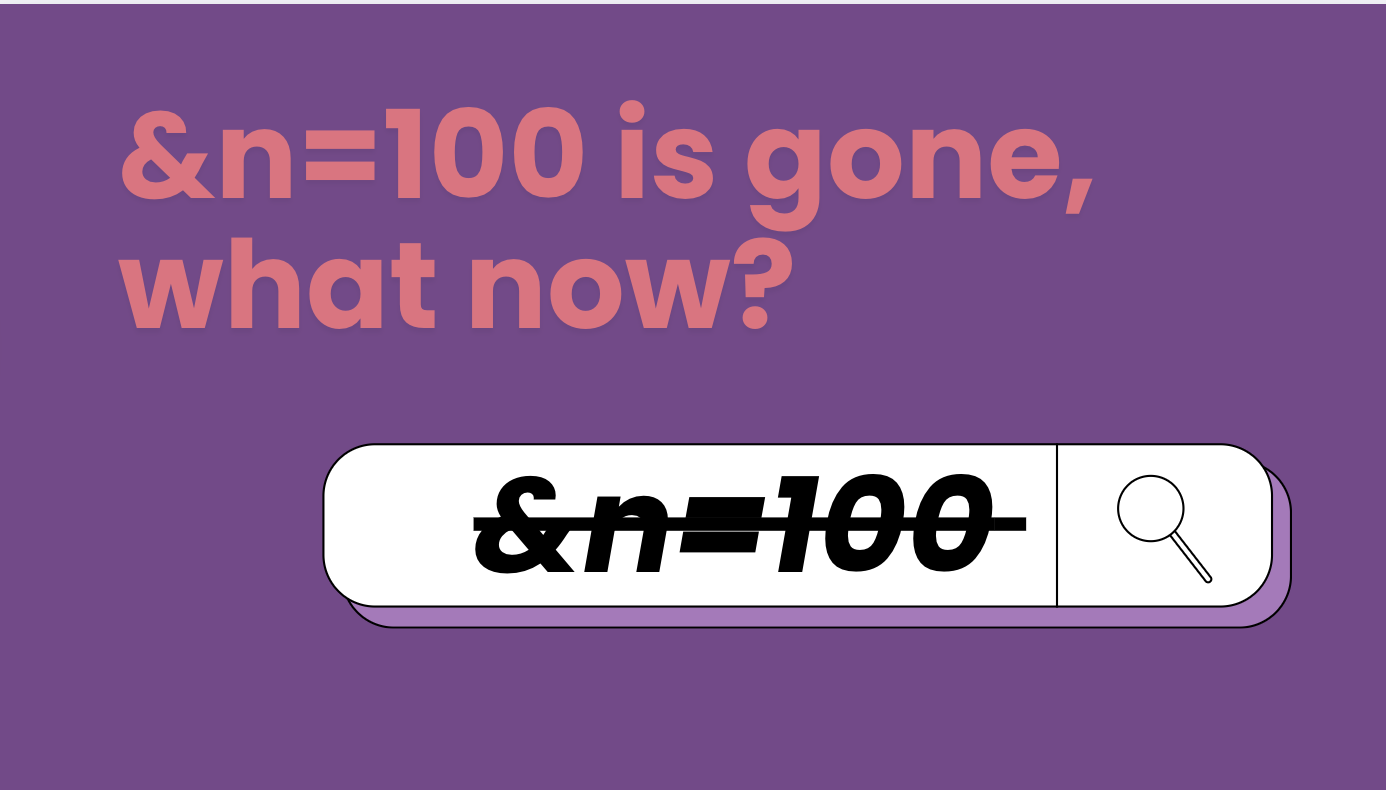On September 10th, Google removed the ability to add &n=100 to search queries. At first glance, this might not sound like a big deal—but in the SEO world, it’s significant.
So, what exactly did &n=100 do? Normally, when you search on Google, you see 10 results per page. Maybe you’ll click over to page two for another 10, but most users stop there. SEO tools, however, have long relied on the &n=100 parameter to pull the first 100 results at once instead of just the top 10. By using &n=100, SEO Tools can see all the results for a keyword and easily scrape that data for the keywords to help return information like rank position, impressions, keyword research and tons of other information.
If the SEO tools were previously able to get 100 results in one request, they now must make 10 requests to get the same data. This means we are either going to see an increase in the cost of the data we are getting from these tools, or we just aren't going to be able to get all the data we are used to.
AccuRanker and SEMrush have already put out statements announcing that they can only guarantee their data for the first 20 results. That means, if we were previously tracking keywords that were 20+, that information will be limited and could potentially go away. The keyword itself is not lost because your site will still show up there (20+ was always a lonely place), but we will not be able to guarantee that we can report on those keywords.
This is going to be a seismic shift in how we can report and track SEO, but it also is affecting Google Search Console.
Google Search Console has always been a more reliable source for rankings because it provides first-party data directly from Google. While Keyword Tracking tools like SEMrush and AccuRanker have always been great at providing supplemental information, as search goes towards personalization and AI, keyword trackers (which are essentially one-time computers being created and searching your keyword as its first ever search - which is not representative of how users search) have become less precise. In Google Search Console, we’re seeing impressions decline across the industry, while clicks remain relatively stable. The prevailing theory is that these impressions were driven primarily by Bots and SEO tools, meaning that they never represented real traffic. This traffic was likely a byproduct of the growth of AI Search and SEO Tools over the past few years.
AI overviews have continued to accelerate Zero-Click Searches. This has led to a shift where impressions are rising, but clicks are declining. Traditionally, impressions and clicks should rise and fall together, but over the past year, we are seeing that these two metrics are no longer correlated. With impressions being lost from Google removing n=100 (but clicks staying even) it introduces another wrinkle into how we understand the relationship between clicks and impressions.
SEO (and AEO, GEO and every other ‘O’) is evolving at breakneck speed. It’s becoming more of an engineering challenge that requires a partner who can balance the people-centric nature of search with the data and technology needed to reach your customers. At Carbon, we’re that partner – helping you connect with the right audience, adapt to change, and keep your brand moving forward.


